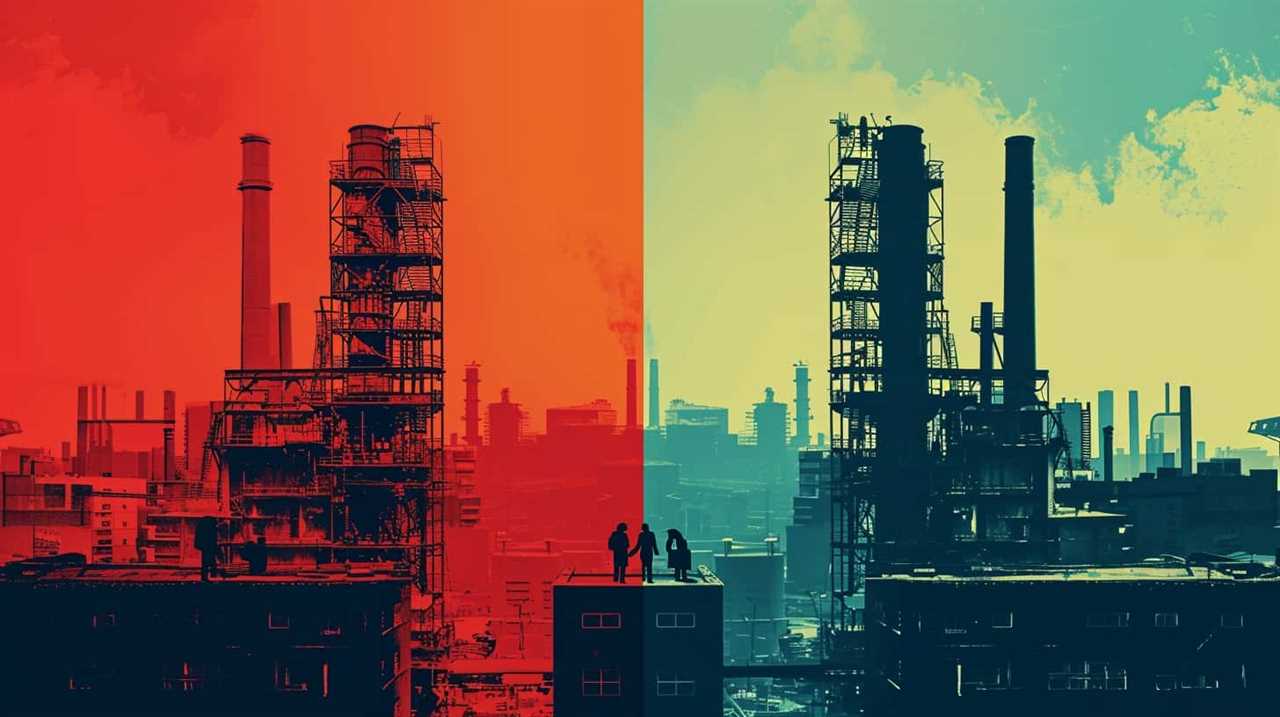Welcome to our examination of Marx’s ideas on class conflict!
In this innovative journey, we delve into the fascinating world of Marxian theory, uncovering its historical origins and relevance in the digital age.
Through active analysis, we aim to understand the intricate dynamics of class conflict, as Marx defined it.
From the clash between the proletariat and bourgeoisie to the intertwined struggles of women, race, and ethnicity, we navigate the multifaceted dimensions of class struggle.

By examining capitalism’s role as a catalyst for social division, we seek to shed light on the complexities of societal power dynamics.
Join us as we unlock the transformative potential of Marx’s class struggle theories and their enduring significance in our ever-evolving world.
Key Takeaways
- Feudalism was a hierarchical system with a clear division between ruling and laboring classes, leading to class struggle.
- Marx defined class struggle as the conflict between the bourgeoisie (capitalist class) and the proletariat (working class) due to the exploitation of labor by the bourgeoisie.
- Capitalism generates class conflict through the unequal distribution of wealth and power, leading to the formation of distinct social classes with conflicting interests.
- Class consciousness is crucial for the proletariat to challenge the capitalist system, as it allows them to recognize exploitation, reject false consciousness, and organize for transformative change.
Historical Origins of Class Struggle
In our exploration of Marx’s class struggle concepts, we frequently encounter the historical origins of class struggle. Understanding the historical interpretations of class struggle is essential to grasp its significance in society. One prominent historical context in which class struggle emerged was in feudal societies.
Feudalism, characterized by a hierarchical system of lords and serfs, laid the foundation for class conflict. The feudal order was marked by a clear division between the ruling class and the laboring class. The ruling class, comprised of nobles and landowners, held power, wealth, and control over the means of production. Meanwhile, the laboring class, consisting of peasants and serfs, faced exploitation, poverty, and limited social mobility.

Class struggle in feudal societies arose from the inherent contradictions within the feudal system. The ruling class relied on the labor of the lower class for their economic prosperity. However, the exploitation and oppression faced by the lower class gave rise to resistance and a desire for change. This struggle between the ruling class and the laboring class culminated in revolts, uprisings, and the eventual breakdown of feudalism.
Marx’s Definition of Class Struggle
To understand Marx’s definition of class struggle, we must delve into the historical origins of this concept and its implications on societal structures and power dynamics. Marx defined class struggle as the conflict between the bourgeoisie, the capitalist class who own the means of production, and the proletariat, the working class who sell their labor for wages. According to Marx, this struggle arises from the inherent contradictions within capitalist society, where the exploitation of labor by the bourgeoisie leads to growing inequality and alienation for the proletariat.
Marx’s definition of class struggle remains relevant today, as we continue to witness the unequal distribution of wealth and power in capitalist societies. The concentration of economic and political power in the hands of a few has resulted in widening income gaps, social unrest, and a sense of powerlessness among the working class. This has led to movements advocating for greater economic justice and challenging the dominance of the capitalist class.
Furthermore, Marx’s analysis of class struggle highlights the dynamic nature of society, where social change is driven by conflicts between different classes and their interests. Understanding this definition allows us to critically analyze the power dynamics and inequalities present in our own society, and to envision alternative systems that prioritize economic and social justice. By questioning the existing structures and advocating for transformative change, we can strive towards a more equitable and inclusive society.
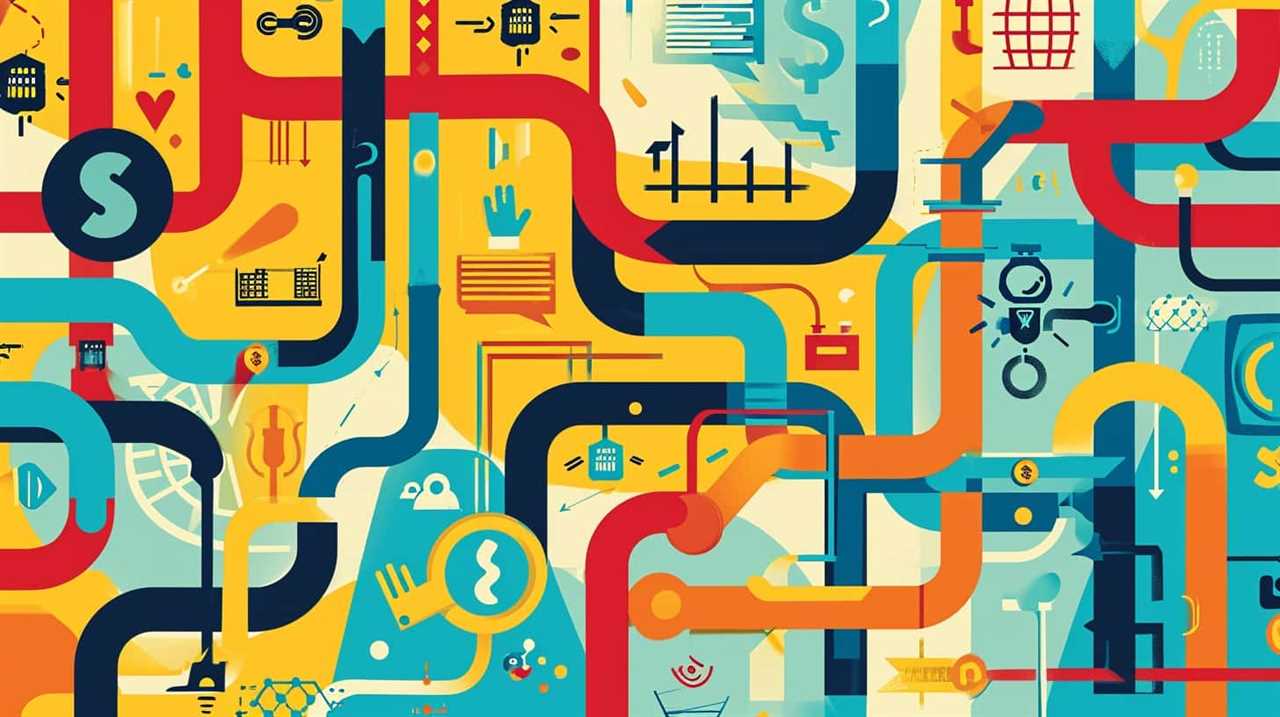
Key Concepts in Marxian Class Analysis
We will now delve into the key concepts of Marxian class analysis. Marx’s class analysis is a foundational aspect of his theory, providing insights into the dynamics of social mobility and capitalist exploitation.
One key concept is the idea that society is divided into two main classes: the bourgeoisie and the proletariat. The bourgeoisie, or the capitalist class, owns the means of production and exploits the proletariat, or the working class, who are forced to sell their labor for a wage. This class division is marked by inherent conflicts of interest, as the bourgeoisie seeks to maximize profit while the proletariat strives for better working conditions and higher wages.
Another key concept is the notion of class consciousness, which refers to the awareness and understanding of one’s class position and interests. Marx argued that the proletariat must develop a collective consciousness in order to challenge the capitalist system and achieve class liberation. This can be achieved through education, organization, and solidarity among the working class.
Additionally, Marx emphasized the role of class struggle in driving historical change. He viewed history as a series of class struggles, where the ruling class is eventually overthrown by the oppressed class. This dialectical process leads to the establishment of a new social order and a redistribution of power.

Capitalism as a Source of Class Conflict
Capitalism, as Marx argues, inherently generates class conflict due to its foundation on the exploitation of labor. The unequal distribution of wealth and power within a capitalist system perpetuates economic inequality, leading to the formation of distinct social classes with conflicting interests.
The bourgeoisie, who own the means of production, benefit from the labor of the proletariat, who must sell their labor in order to survive. This inherent class conflict drives the struggle for control over resources and the means of production, shaping the dynamics of society under capitalism.
Inherent Class Conflict
Our society is rife with examples of the inherent class conflict that arises from the capitalist system. The influence of globalization has deepened this conflict, as multinational corporations exploit cheap labor in developing countries while the wealthy elite reap the benefits.
Economic downturns exacerbate class tensions, as the working class bears the brunt of job losses and financial instability, while the wealthy continue to amass wealth through their investments. This unequal distribution of power and resources leads to social inequality and further widens the gap between the haves and the have-nots.

The capitalist system inherently perpetuates class conflict by prioritizing profit over the well-being of the majority. As we seek innovation and progress, it’s crucial to critically examine and challenge the structures that perpetuate this class conflict.
Economic Inequality Perpetuates?
The perpetuation of class conflict can be attributed to the economic inequality perpetuated by the capitalist system. As Marx argued, capitalism creates a division between the bourgeoisie, who own and control the means of production, and the proletariat, who sell their labor for wages. This division leads to an unequal distribution of wealth, power, and opportunities, resulting in deep-rooted social and economic disparities.
To better understand the consequences of economic inequality, let’s examine the table below:
| Consequences of Economic Inequality |
|---|
| Limited social mobility |
| Unequal access to education |
| Health disparities |
| Political marginalization |
| Increased crime rates |
Addressing economic inequality requires innovative approaches. Some possible ways to tackle this issue include implementing progressive taxation to redistribute wealth, investing in quality education and healthcare for all, and creating policies that promote fair wages and worker rights. By reducing economic disparities, we can strive towards a more just and equal society, where class conflict is less prevalent.

Proletariat Vs. Bourgeoisie in the Class Struggle
In the ongoing class struggle, we, the working class, find ourselves pitted against the bourgeoisie, the ruling class. This conflict between the proletariat and the bourgeoisie has a deep historical context that shapes the dynamics of society.
The historical context of the proletariat and bourgeoisie dates back to the emergence of capitalism in the 19th century. With the rise of industrialization, a new class, the bourgeoisie, emerged as the owners of the means of production, while the proletariat, the working class, became dependent on selling their labor for survival.
The influence of the class struggle between the proletariat and bourgeoisie on societal change can’t be underestimated. It’s through this struggle that significant transformations occur in society. The proletariat, driven by their exploitation and alienation under capitalism, becomes aware of their collective power and potential for change. The class struggle acts as a catalyst for revolution, as the proletariat seeks to overthrow the bourgeoisie and establish a more equitable society. This struggle not only brings about political change but also challenges the existing social structures and economic systems.
Exploitation and Alienation Under Capitalism
As the working class, we experience exploitation and alienation under capitalism due to our dependence on selling our labor for survival. The capitalist system, driven by profit, creates a power dynamic that allows the bourgeoisie to exploit our labor for their own gain. This exploitation occurs in various forms, such as low wages, long working hours, and unsafe working conditions. We are forced to work for the capitalists, who control the means of production, in order to earn a living. This creates a sense of powerlessness and dependency, as our livelihoods are tied to the whims of the capitalist class.

Furthermore, capitalism also breeds alienation in our society. We are alienated not only from the products of our labor, but also from the process of production itself. In the capitalist system, our work becomes fragmented and specialized, reducing us to mere cogs in the machinery of production. We are disconnected from the final outcome of our labor, as the products we create are owned and controlled by the capitalists. This alienation extends beyond the workplace and permeates our entire lives, as we become detached from our true human nature and are reduced to mere economic beings.
To further illustrate the exploitation and alienation experienced under capitalism, consider the following table:
| Exploitation in the Workplace | Alienation in Capitalist Society |
|---|---|
| Low wages | Alienation from the products |
| Long working hours | Fragmentation of labor |
| Unsafe working conditions | Detachment from human nature |
Class Consciousness and Revolutionary Potential
With the emergence of class consciousness among the working class, we’re beginning to realize our revolutionary potential. This awakening of awareness is crucial in understanding our position within the capitalist system and recognizing the need for collective action to challenge and overthrow it. Here are four key points to consider:
- Identification of exploitation: Class consciousness allows us to recognize the exploitative nature of capitalist relations, where the bourgeoisie accumulates wealth through the extraction of surplus value from the labor of the proletariat. This awareness fosters a sense of solidarity and collective struggle against this exploitation.
- Understanding systemic oppression: Class consciousness goes beyond economic exploitation and encompasses an understanding of intersecting systems of oppression, such as racism, sexism, and imperialism. It enables us to connect our struggles and recognize the interconnectedness of various marginalized groups, strengthening our revolutionary potential.
- Rejection of false consciousness: Class consciousness challenges the dominant ideology propagated by the ruling class, exposing the illusion of meritocracy and individual success. It allows us to see through the false narratives that perpetuate inequality and justify the existing social order.
- Organizing for transformative change: Class consciousness isn’t merely an intellectual understanding; it’s a catalyst for collective action. By organizing ourselves and mobilizing our revolutionary potential, we can challenge the existing power structures and work towards a more just and equitable society.
As we delve further into the discussion of class struggle and the role of the state, we’ll explore how class consciousness shapes our understanding of the dynamics between the ruling class and the proletariat, and how it influences our strategies for revolutionary change.
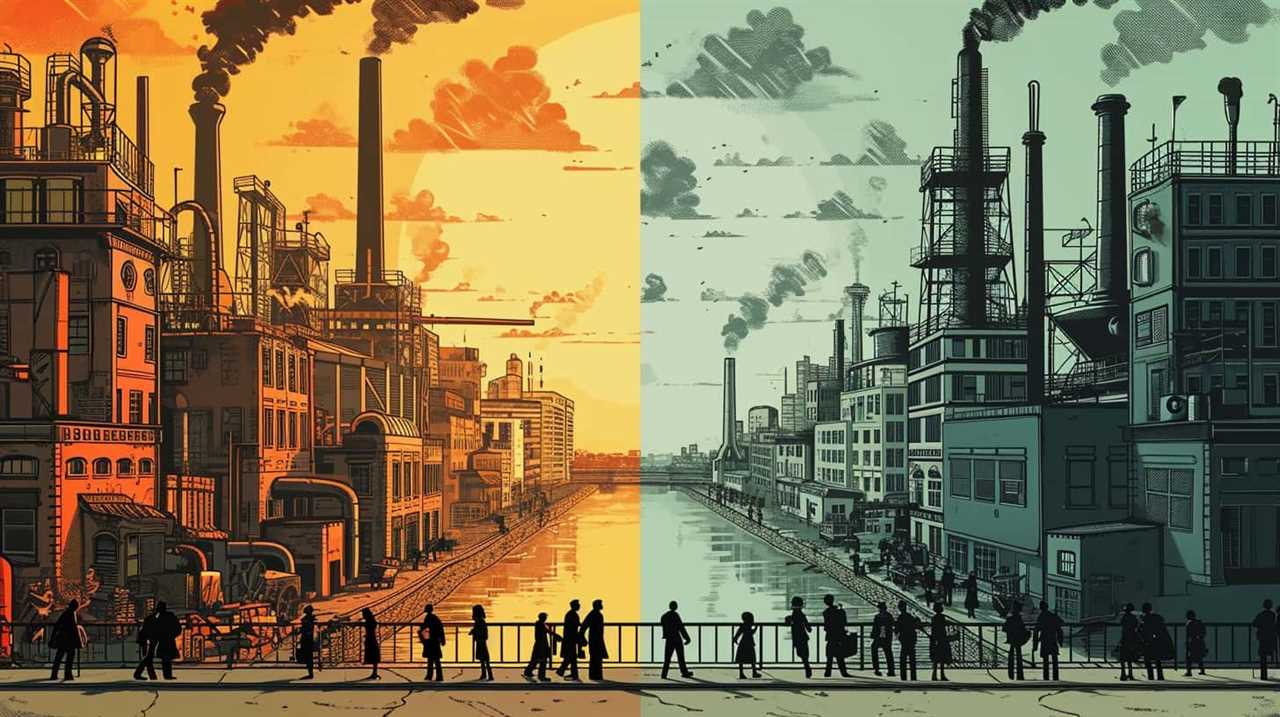
Class Struggle and the Role of the State
After recognizing the exploitative nature of capitalist relations and understanding systemic oppression, we now turn our attention to the role of the state in the class struggle. The state, in Marxist theory, is seen as an instrument that serves the interests of the ruling class and perpetuates the existing class divisions and inequalities. It isn’t a neutral entity, but rather a tool used to maintain the dominance of the bourgeoisie over the proletariat.
The role of the state in the class struggle is complex and multifaceted. On one hand, the state acts as a repressive force, using its legal and coercive powers to suppress and control the working class. It protects private property rights and enforces laws that benefit the capitalist class, while simultaneously suppressing workers’ movements and protests.
On the other hand, the state also plays a role in managing and mediating class conflicts. It implements social policies and welfare programs to alleviate some of the grievances of the working class, in order to maintain social stability and prevent revolutionary upheavals. This can be seen as a strategy to co-opt and pacify the working class, by providing them with minimal concessions while preserving the overall capitalist system.
Understanding the dynamics of class struggle and the role of the state is crucial for envisioning alternative forms of social organization and challenging the existing power structures. By recognizing the inherent class bias of the state and its function in perpetuating class inequalities, we can begin to imagine and strive for a society where the state serves the interests of the working class, rather than the capitalist elite.

Economic Crises and Class Conflict
When examining the relationship between economic crises and class conflict through a Marxist lens, several key points emerge.
Firstly, capitalism inherently fosters social inequality, as it concentrates wealth and power in the hands of the bourgeoisie while exploiting the proletariat.
Secondly, economic downturns intensify class tensions as the working class bears the brunt of job losses, wage cuts, and precarious employment.
Lastly, Marx argues that these crises can serve as catalysts for class consciousness, potentially leading to revolutionary movements aimed at overthrowing the capitalist system.

Through this analysis, we can understand how economic crises aren’t simply isolated events, but rather deeply intertwined with class struggle and the quest for social change.
Capitalism and Social Inequality
In exploring Marx’s class struggle concepts, we examine the relationship between capitalism and social inequality, particularly in the context of economic crises and class conflict.
- Income inequality: Under capitalism, wealth is concentrated in the hands of a few, leading to significant disparities in income distribution. This perpetuates social inequality and hampers social mobility.
- Social mobility: Capitalism’s inherent structure often limits upward mobility, making it difficult for individuals from lower socioeconomic backgrounds to move up the ladder. This entrenches social inequality and creates a cycle of disadvantage.
- Class conflict: Economic crises, such as recessions and depressions, intensify class conflict as the working class bears the brunt of the consequences while the wealthy maintain their privilege. This exacerbates social inequality and widens the gap between the rich and the poor.
- Power dynamics: Capitalism allows the bourgeoisie to wield significant economic power, enabling them to influence political systems and policies. This perpetuates social inequality and hinders efforts for social change.
Understanding the relationship between capitalism and social inequality is crucial in comprehending the impact of economic downturns on society.
Impact of Economic Downturns
During economic downturns, we experience the impact of economic crises and class conflict on society.
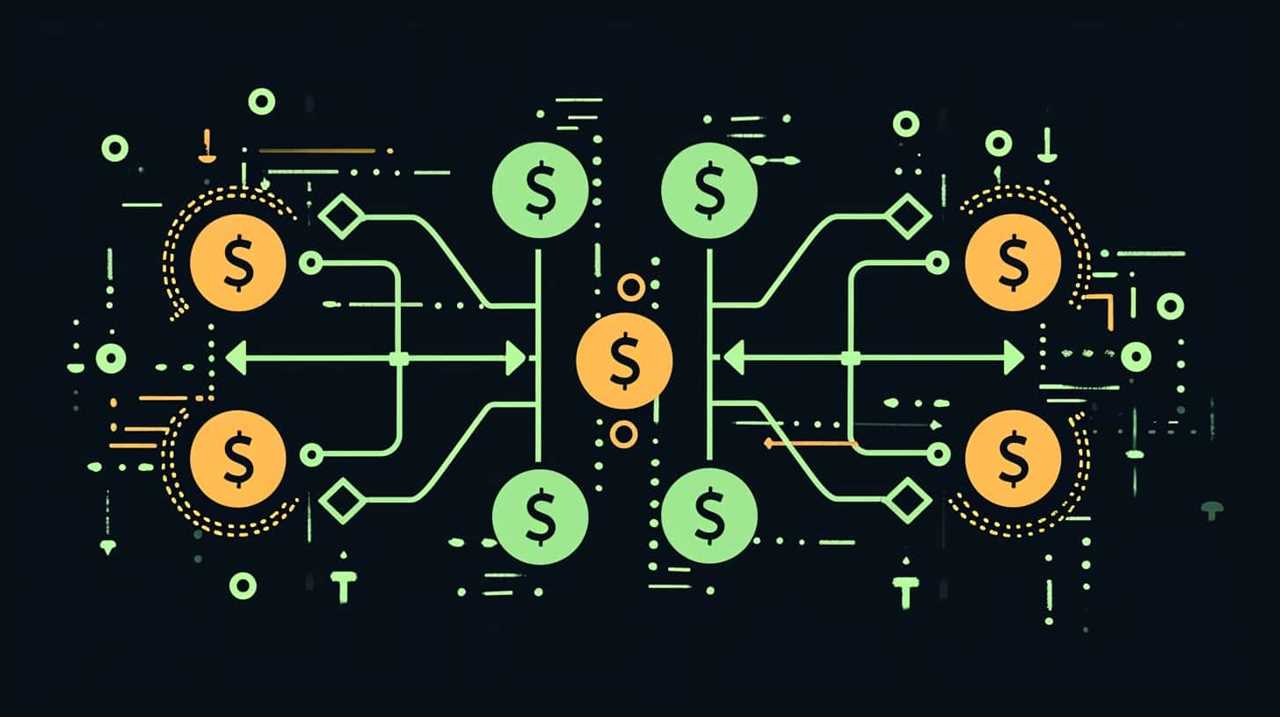
These downturns often lead to a significant rise in unemployment, which has far-reaching implications for individuals and communities.
The impact of unemployment isn’t only limited to financial strain, but it also affects mental health, self-esteem, and overall well-being.
Furthermore, economic crises tend to exacerbate existing inequalities in resource distribution.
The gap between the wealthy and the working class widens, as the latter group bears the brunt of the economic downturn.
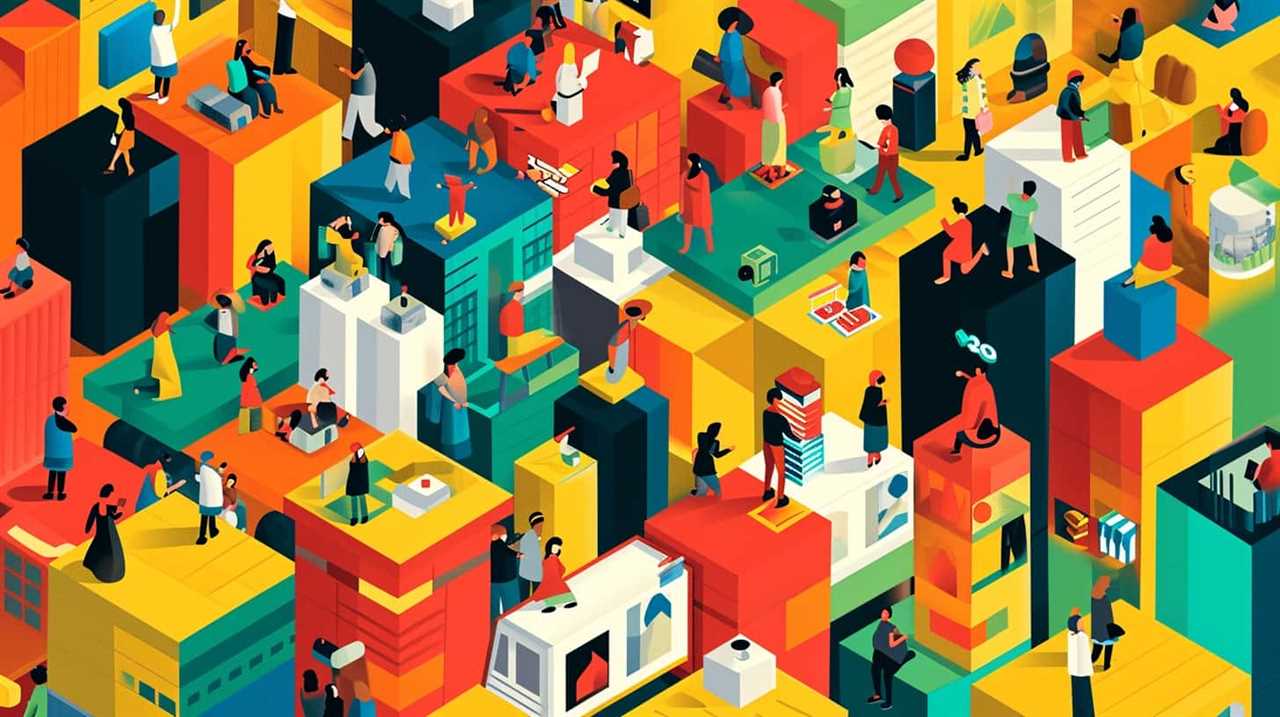
Scarce resources become even scarcer, making it difficult for those in lower socioeconomic classes to access basic necessities.
These inequalities in resource distribution further fuel class conflict and social unrest.
As we delve into the concept of class consciousness and revolution, we’ll see how these economic crises lay the groundwork for societal transformation.
Class Consciousness and Revolution
Our understanding of the relationship between economic crises and class conflict deepens when we examine the concept of class consciousness and its role in sparking revolution.

Class consciousness, the awareness of one’s position within the class structure, has a profound impact on the actions and aspirations of individuals and groups. In the context of economic crises, class consciousness can ignite revolutionary movements by highlighting the injustices and inequalities perpetuated by the ruling class.
- Class consciousness fosters solidarity among workers, creating a shared understanding of their exploitation and the need for collective action.
- It challenges the dominant ideology that perpetuates the status quo and legitimizes the power of the ruling class.
- Class consciousness encourages the formation of revolutionary organizations, such as labor unions and socialist parties, to advocate for the rights and interests of the working class.
- It provides the motivation and determination necessary for revolutionary movements to challenge the existing social order and demand systemic change.
Globalization and the Intensification of Class Struggle
Globalization has amplified the intensity of class struggle. The impact of globalization on societies worldwide has been significant, and it has led to the rising inequality that fuels class conflicts. As countries open their borders to trade and investment, global economic integration has reshaped the structure of economies, creating winners and losers. While globalization has brought economic growth and opportunities for some, it has also deepened the divide between the rich and the poor.
The intensification of class struggle can be attributed to several factors. Firstly, globalization has enabled multinational corporations to exploit cheap labor in developing countries, leading to the displacement of jobs in industrialized nations. This has resulted in a decline in wages and job security for workers, exacerbating social and economic inequalities. Secondly, the global financial system, driven by speculative investments and deregulation, has benefitted the wealthy elite while leaving ordinary workers vulnerable to economic crises. This has further widened the gap between the haves and the have-nots, fueling resentment and resistance.
Moreover, globalization has facilitated the flow of capital across borders, enabling the wealthy to accumulate wealth and power at an unprecedented scale. Transnational corporations have become influential actors that exert significant control over governments and shape policies in their favor. This concentration of power has undermined democracy and reinforced the dominance of the capitalist class.

Intersectionality and Class Struggle
In relation to the intensification of class struggle discussed previously, we must now address the significance of intersectionality in understanding and addressing these social conflicts. Intersectionality refers to the interconnected nature of social identities, such as race, gender, sexuality, and class, and how they intersect to create unique systems of oppression and privilege.
To fully grasp the dynamics of class struggle, it’s vital to consider how capitalism intersects with other forms of oppression. Here are four key points to consider:
- Intersectionality and capitalism: Capitalism not only perpetuates economic inequalities but also intersects with other forms of oppression, such as racism and sexism. Understanding how these systems interact is crucial in developing a comprehensive analysis of class struggle.
- Intersectionality and social justice movements: Intersectionality provides a framework for social justice movements to address the multiple layers of oppression that individuals face. By recognizing the interconnectedness of different forms of oppression, these movements can effectively challenge the power structures that perpetuate inequality.
- Challenging class reductionism: Intersectionality challenges the tendency to reduce class struggle to economic factors alone. It highlights the importance of considering how various identities and social locations intersect to shape individuals’ experiences of oppression.
- Building solidarity: Acknowledging intersectionality within class struggle helps build solidarity among diverse groups. By recognizing the different ways individuals experience oppression, we can create alliances that are stronger and more inclusive.
Women’s Liberation and Class Struggle
How does women’s liberation intersect with class struggle?
Women’s liberation and class struggle are deeply intertwined and interconnected. Intersectionality plays a crucial role in understanding the complex dynamics of gender inequality and class struggle.

Gender inequality affects women from all social classes, but it’s important to recognize that the experiences of women from different class backgrounds can vary significantly. Women from marginalized communities, such as working-class women and women of color, often face multiple forms of oppression that intersect with their gender. These intersections highlight the need to address both gender inequality and class struggle simultaneously.
Class struggle, on the other hand, isn’t gender-neutral. The capitalist system perpetuates gender disparities by exploiting the labor of women and maintaining patriarchal structures. The burden of unpaid domestic work and the undervaluing of traditionally feminine professions are just some examples of how gender inequality is perpetuated within the capitalist system.
To achieve true women’s liberation, it’s essential to challenge the capitalist system and its inherent gender biases. This requires recognizing the interconnectedness of gender inequality and class struggle, and working towards dismantling both systems simultaneously. By understanding the ways in which these struggles intersect, we can strive towards a more inclusive and equitable society.
Race, Ethnicity, and Class Struggle
We must recognize the intersectionality of race, ethnicity, and class struggle to fully understand the complexities of social oppression. The dynamics between race and class are deeply intertwined, and it’s crucial to analyze how they intersect in the context of class struggle.

Here are four key points to consider:
- Race and class dynamics: The experiences of different racial and ethnic groups within the class struggle are shaped by their unique histories and social positions. For example, racial minorities may face additional barriers and discrimination in their pursuit of economic and social mobility.
- Intersectionality in class struggle: Intersectionality highlights the multiple forms of oppression that individuals may face due to their intersecting identities. It emphasizes that class struggle can’t be understood in isolation from other forms of oppression, such as racism and sexism.
- Structural inequalities: The capitalist system perpetuates and exacerbates racial and ethnic inequalities. Wealth and power are concentrated in the hands of a few, often at the expense of racial and ethnic minorities who are disproportionately marginalized and exploited.
- Solidarity and collective action: Recognizing the intersectionality of race, ethnicity, and class can foster solidarity among different groups fighting against oppression. By understanding the interconnections between different struggles, we can work towards a more inclusive and equitable society.
Understanding the complex relationship between race, ethnicity, and class struggle is essential for creating innovative solutions to address social inequalities. By analyzing the dynamics of race and class within the context of intersectionality, we can develop more comprehensive strategies for achieving social justice and liberation.
Class Struggle in the Digital Age
In the exploration of Marx’s class struggle concepts, it’s important to consider the implications of class struggle in the digital age. The digitization of work has revolutionized the way we interact with labor rights. With the rise of remote work and the gig economy, traditional notions of class struggle are being redefined. The digital age has brought about new forms of exploitation, as workers face precarious employment conditions and lack of job security.
Social media platforms have also played a significant role in shaping class conflict in the digital age. These platforms have provided a space for workers to organize and mobilize for their rights. Hashtags like #FightFor15 and #MeToo have gained traction, highlighting the power of social media in amplifying the voices of marginalized workers.
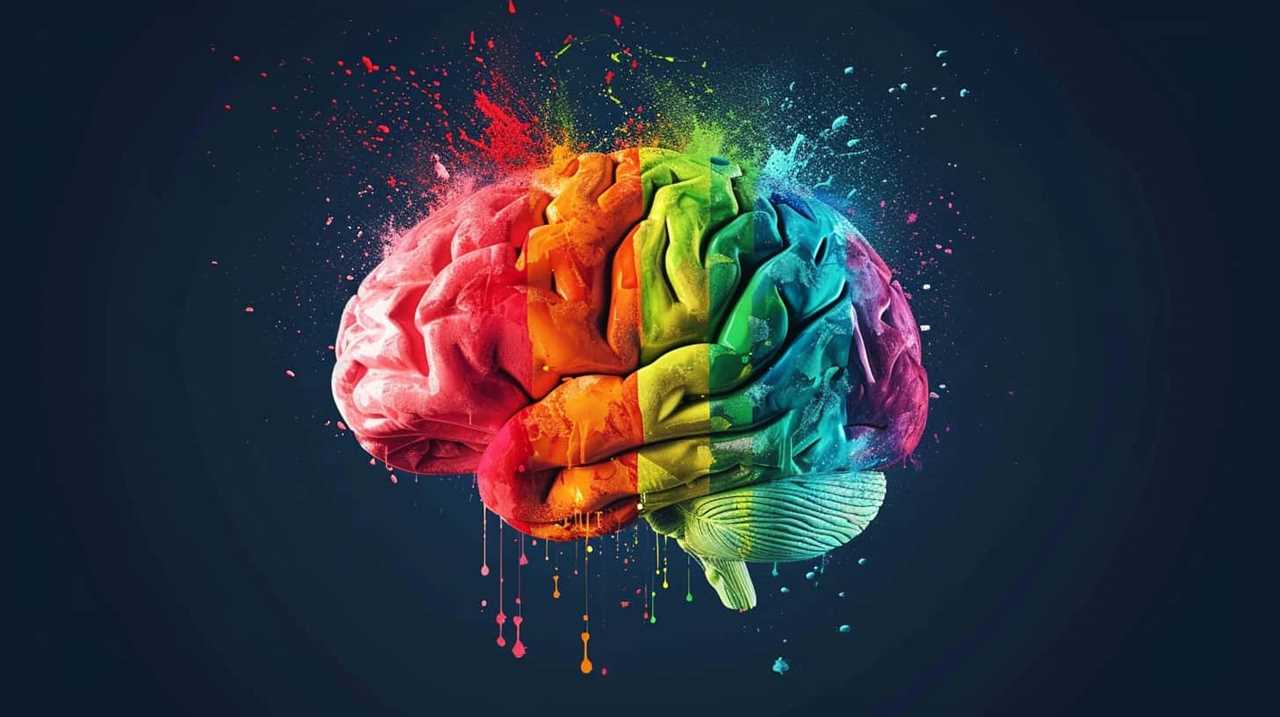
However, social media can also be a double-edged sword. It has created a culture of surveillance and monitoring, where workers’ every move is scrutinized. Companies use social media to monitor their employees’ activities and control their behavior.
The Relevance of Marx’s Class Struggle Theories Today
Marx’s class struggle theories continue to hold relevance in today’s society, as they shed light on the ongoing struggles faced by different social classes. In the midst of contemporary class conflicts, Marx’s theories provide a critical lens to understand the complexities of evolving class dynamics.
Here are four key reasons why Marx’s class struggle theories remain significant in today’s world:
- Analysis of Power Structures: Marx’s theories highlight the unequal distribution of power and resources among social classes. By examining the economic relations between the bourgeoisie and the proletariat, we can better comprehend the power imbalances that persist in our society.
- Understanding Exploitation: Marx’s concept of exploitation allows us to recognize and challenge the exploitation of labor by capitalist systems. It helps us question the fairness of systems that prioritize profit accumulation over the well-being of workers.
- Challenging Social Inequality: Marx’s theories encourage us to question and challenge the prevailing social inequalities that are perpetuated by class divisions. By highlighting the structural nature of these inequalities, we can work towards creating a more equitable society.
- Advocating for Social Change: Marx’s theories provide a theoretical framework for those seeking social change. By analyzing class struggle and the contradictions of capitalism, we can identify opportunities for collective action and strive towards a more just society.
Frequently Asked Questions
How Does Marx’s Definition of Class Struggle Differ From Other Theories of Social Conflict?
In comparing Marx’s definition of class struggle with other theories of social conflict, we can observe its relevance and unique perspective. The concept of class struggle, central to Marx’s theory, highlights the inherent conflict and power dynamics between different social classes. This perspective differs from other theories that may focus on different forms of conflict or emphasize other factors such as race, gender, or culture. By analyzing class struggle, Marx provides a critical lens to understand societal divisions and the structural inequalities that perpetuate them. This analytical approach offers valuable insights and encourages innovative thinking in addressing social disparities.
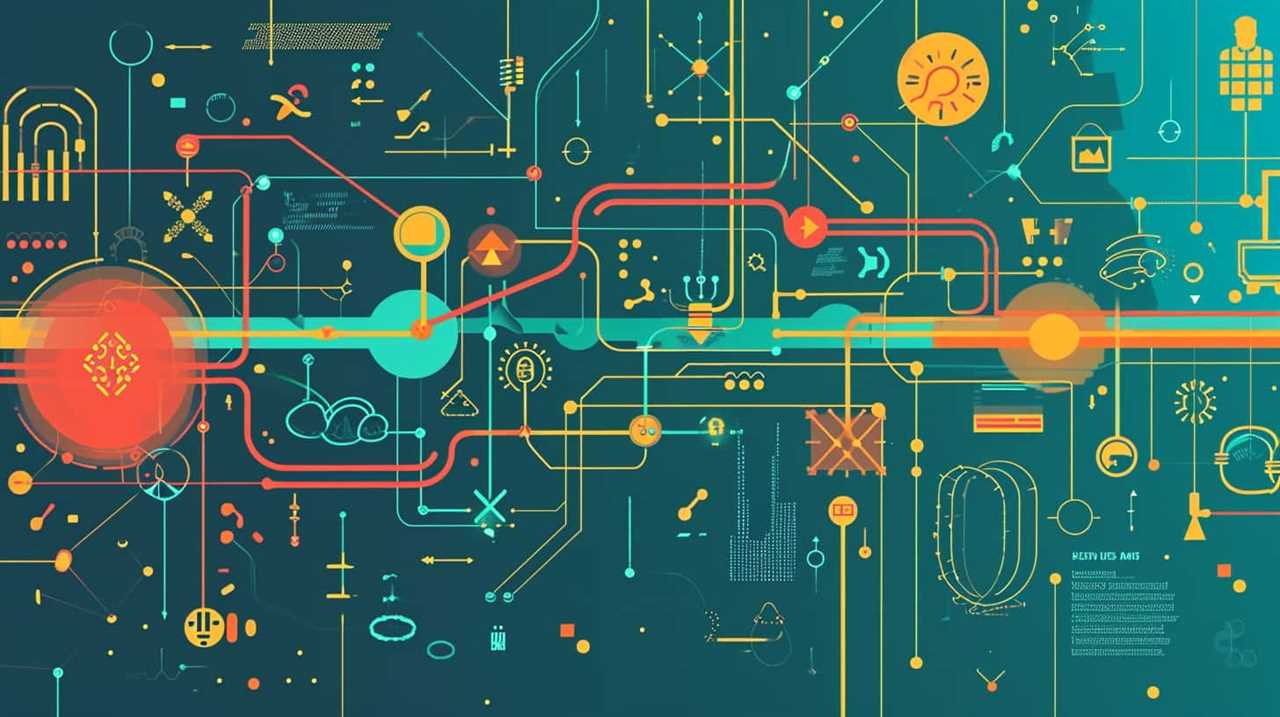
What Are Some Key Criticisms of Marx’s Class Analysis Concepts?
Some key criticisms of Marx’s class analysis concepts include critiques of their oversimplification and determinism. Flaws in his framework include the neglect of other forms of social inequality and the lack of agency given to individuals.
How Does Capitalism Perpetuate Class Conflict in Modern Society?
Capitalism perpetuates class conflict in modern society by concentrating wealth and power in the hands of a few, creating inequality. Marx’s perspective on class struggle highlights the inherent contradictions and exploitation within the capitalist system.
Are There Any Examples of Successful Class-Conscious Movements Leading to Revolutionary Change?
Successful movements that have led to revolutionary change include the Russian Revolution, the Chinese Communist Revolution, and the Cuban Revolution. These examples demonstrate the power of class-consciousness in challenging existing systems and creating transformative societal shifts.
How Do Economic Crises Impact Class Conflict and Inequality?
Economic crises profoundly impact class conflict and inequality. The destabilization caused by crises exposes underlying social dynamics, leading to heightened tensions. Inequality exacerbates these conflicts, as marginalized groups become more aware of their exploitation and demand change.

Conclusion
In conclusion, Marx’s class struggle concepts serve as a powerful lens through which we can analyze societal dynamics and power structures. Just as a magnifying glass reveals hidden details, Marx’s theories uncover the hidden conflicts and inequalities that underlie capitalist societies.
By understanding the interplay between the proletariat and bourgeoisie, as well as the intersections of gender, race, and class, we can begin to dismantle these oppressive systems and work towards a more equitable future.
Like a key that unlocks the chains of oppression, Marx’s class struggle theories remain relevant and essential in today’s world.
Lauren’s talent in writing is matched by her passion for storytelling. Her love for books and deep understanding of culture and entertainment add a distinct flavor to her work. As our media and press contact, Lauren skillfully bridges the gap between afterQuotes and the broader media landscape, bringing our message to a wider audience.





